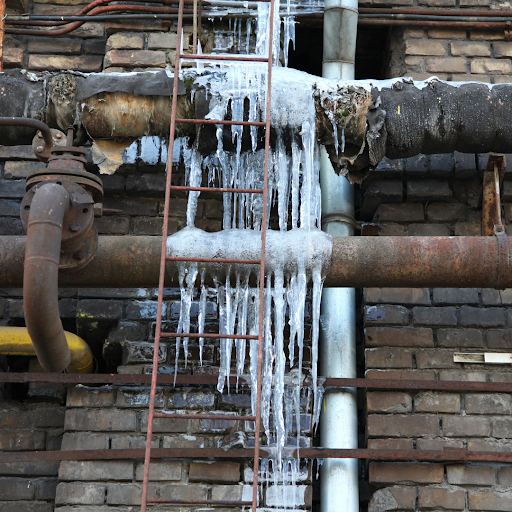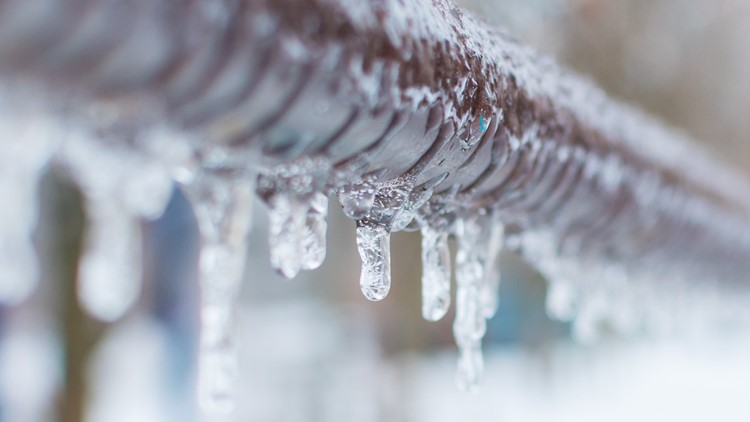Tips to Avoid Frozen Pipes in Cold Weather: Expert Advice
Tips to Avoid Frozen Pipes in Cold Weather: Expert Advice
Blog Article
The content below on the subject of Preventing and dealing with frozen pipes is relatively interesting. Have a go and make your own final thoughts.

Cold weather can ruin your plumbing, especially by freezing pipelines. Below's exactly how to stop it from happening and what to do if it does.
Introduction
As temperature levels drop, the danger of icy pipes rises, potentially causing pricey repairs and water damage. Recognizing just how to stop icy pipelines is vital for home owners in cool environments.
Avoidance Tips
Insulating at risk pipes
Wrap pipelines in insulation sleeves or make use of warmth tape to shield them from freezing temperature levels. Focus on pipes in unheated or exterior areas of the home.
Home heating methods
Keep indoor areas sufficiently heated, especially locations with pipes. Open cupboard doors to allow cozy air to distribute around pipes under sinks.
Exactly how to identify icy pipes
Look for reduced water circulation from faucets, uncommon odors or noises from pipelines, and visible frost on revealed pipelines.
Long-Term Solutions
Structural modifications
Consider rerouting pipes far from exterior walls or unheated areas. Include added insulation to attic rooms, cellars, and crawl spaces.
Updating insulation
Purchase premium insulation for pipelines, attic rooms, and walls. Appropriate insulation assists preserve constant temperatures and minimizes the threat of icy pipelines.
Securing Outdoor Plumbing
Garden hose pipes and outdoor faucets
Separate and drain pipes garden hose pipes before winter. Mount frost-proof faucets or cover outside taps with shielded caps.
Comprehending Frozen Pipelines
What creates pipes to ice up?
Pipelines ice up when revealed to temperature levels below 32 ° F (0 ° C) for prolonged durations. As water inside the pipelines ices up, it increases, taxing the pipe wall surfaces and possibly triggering them to break.
Risks and problems
Frozen pipelines can result in water supply disturbances, building damage, and costly repair work. Burst pipes can flood homes and trigger considerable architectural damages.
Indicators of Frozen Piping
Recognizing icy pipelines early can stop them from breaking.
What to Do If Your Pipelines Freeze
Immediate actions to take
If you presume frozen pipes, maintain taps available to eliminate pressure as the ice thaws. Make use of a hairdryer or towels soaked in hot water to thaw pipelines gradually.
Conclusion
Preventing icy pipes calls for positive measures and quick responses. By comprehending the reasons, indicators, and safety nets, house owners can protect their pipes throughout cold weather.
5 Ways to Prevent Frozen Pipes
Drain Outdoor Faucets and Disconnect Hoses
First, close the shut-off valve that controls the flow of water in the pipe to your outdoor faucet. Then, head outside to disconnect and drain your hose and open the outdoor faucet to allow the water to completely drain out of the line. Turn off the faucet when done. Finally, head back to the shut-off valve and drain the remaining water inside the pipe into a bucket or container. Additionally, if you have a home irrigation system, you should consider hiring an expert to clear the system of water each year.
Insulate Pipes
One of the best and most cost-effective methods for preventing frozen water pipes is to wrap your pipes with insulation. This is especially important for areas in your home that aren’t exposed to heat, such as an attic. We suggest using foam sleeves, which can typically be found at your local hardware store.
Keep Heat Running at 65
Your pipes are located inside your walls, and the temperature there is much colder than the rest of the house. To prevent your pipes from freezing, The Insurance Information Institute suggests that you keep your home heated to at least 65 degrees, even when traveling. You may want to invest in smart devices that can keep an eye on the temperature in your home while you’re away.
Leave Water Dripping
Moving water — even a small trickle — can prevent ice from forming inside your pipes. When freezing temps are imminent, start a drip of water from all faucets that serve exposed pipes. Leaving a few faucets running will also help relieve pressure inside the pipes and help prevent a rupture if the water inside freezes.
Open Cupboard Doors
Warm your kitchen and bathroom pipes by opening cupboards and vanities. You should also leave your interior doors ajar to help warm air circulate evenly throughout your home.

As an enthusiastic person who reads on Winter Plumbing Precautions: Preventing Frozen Pipes, I assumed sharing that excerpt was really useful. Those who liked our blog post plz consider to share it. I recognize the value of reading our article about Prevent Frozen Pipes .
Call Today Report this page